Welcome to Technology Moment, where we explore the fascinating world of innovation and gadgets that shape our everyday lives. In today’s feature, we turn our spotlight to the iPhone 8 Plus, a device that perfectly embodies Apple’s vision of merging style with groundbreaking technology. Whether you’re a tech enthusiast or someone looking to rediscover the capabilities of this iconic phone, this comprehensive guide will walk you through everything you need to know. From its cutting-edge design to powerful features, let’s unravel why the iPhone 8 Plus remains a noteworthy contender in the smartphone landscape.
The iPhone 8 Plus, launched as part of Apple’s 11th generation of smartphones, represents a pivotal moment in mobile technology. It’s a bridge between the classic iPhone design many users loved and the modern innovations that define today’s smartphones. By blending a sleek, premium design with cutting-edge features, the iPhone 8 Plus has cemented its place as a favorite among tech enthusiasts.
A Snapshot of its Legacy
At its core, the iPhone 8 Plus marked a significant evolution in Apple’s lineup. It introduced features like wireless charging, True Tone technology, and advanced camera capabilities, showcasing Apple’s commitment to pushing technological boundaries. While it maintained the familiar home button and Touch ID, the device hinted at the future of Apple’s smartphones, where innovation and usability go hand in hand.
Why the iPhone 8 Plus Still Stands Out
Even years after its release, the iPhone 8 Plus remains relevant. Its robust hardware, powered by the A11 Bionic chip, and seamless integration with Apple’s iOS ecosystem make it a reliable choice for users who value performance and longevity. For those looking for a device that offers premium features without the high price tag of newer models, the iPhone 8 Plus delivers a perfect balance.
The Appeal Across Different User Groups
One of the reasons the iPhone 8 Plus gained widespread popularity is its versatility. Whether you’re a photography enthusiast, a casual gamer, or someone who needs a phone that just works, the device caters to a wide range of needs. Its user-friendly interface, combined with advanced capabilities like augmented reality support, ensures it meets the demands of today’s tech-savvy users.
Table of Contents
Design and Build
The iPhone 8 Plus stands out as a masterpiece of craftsmanship, showcasing Apple’s unwavering commitment to combining functionality with style.
Premium Aesthetics
One of the first things you’ll notice about the iPhone 8 Plus is its sophisticated appearance. The device features a stunning glass back, which not only adds a touch of elegance but also enables wireless charging—a major leap in convenience. The glass surface is precision-engineered to maintain durability while delivering a glossy, premium feel in your hand.
The aluminum frame complements the glass back, providing structural support and a polished finish. This combination of materials not only enhances the phone’s aesthetics but also makes it incredibly comfortable to hold. Apple has crafted the edges to be smooth and ergonomic, ensuring the phone feels secure even during prolonged use.
Durability Enhancements
Apple understands that beauty is nothing without durability, and the iPhone 8 Plus is a testament to that philosophy. The phone is built with strengthened glass that Apple claims is “the most durable glass ever used in a smartphone” at the time of its release. This added layer of protection ensures the device can withstand the wear and tear of everyday life.
Moreover, the iPhone 8 Plus is equipped with an IP67 rating, meaning it is resistant to water and dust. Whether you accidentally spill water on your phone or drop it in a dusty environment, you can rest assured that the iPhone 8 Plus can handle it. While it’s not meant for deep-sea adventures, the device can survive submersion in up to 1 meter of water for 30 minutes.
Attention to Detail
Every aspect of the iPhone 8 Plus’s design has been meticulously crafted to exude elegance and functionality. From the seamless transition between the glass back and the aluminum frame to the precise placement of the camera bump, nothing feels out of place. Apple offers this model in three classic color options—Space Gray, Silver, and Gold—all of which are coated with a durable finish that resists smudges and fingerprints.
Why It Still Stands Out
Even years after its release, the design of the iPhone 8 Plus continues to hold its own. Its combination of timeless aesthetics, high-quality materials, and practical enhancements makes it a phone that’s not only functional but also a joy to use.
Display and Screen Technology
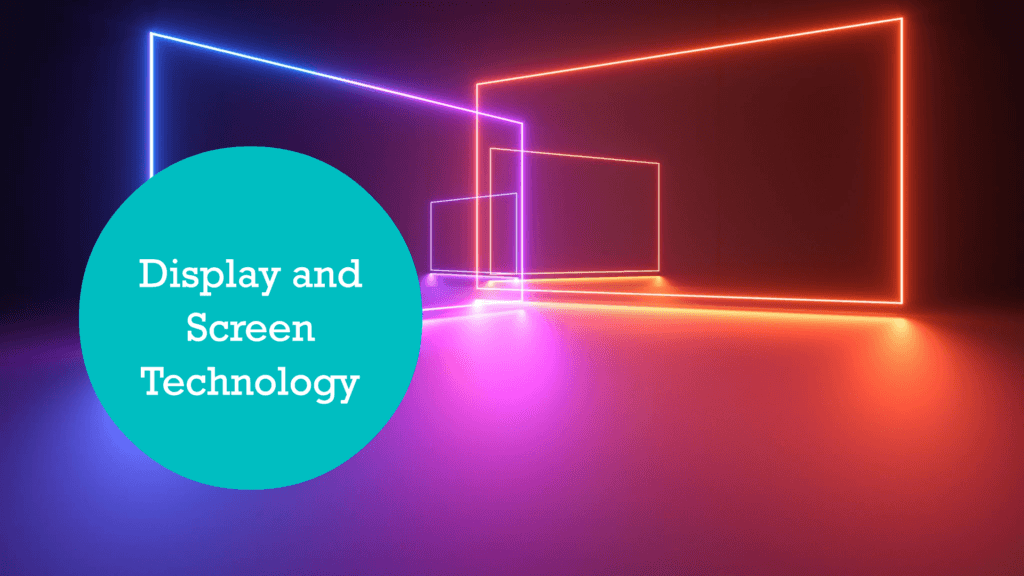
Retina HD Display
The iPhone 8 Plus features a 5.5-inch Retina HD display that strikes the perfect balance between clarity and color vibrancy. With a resolution of 1920 x 1080 pixels, it offers a sharp visual experience that makes everything from watching videos to reading text incredibly enjoyable. The 401 pixels per inch (PPI) density ensures that every detail on the screen is crisp and clear, whether you’re scrolling through social media or playing a graphically intensive game.
Apple has also integrated dual-domain pixels, which provide wider viewing angles. This means you can share your screen with others without compromising on quality, making group viewing sessions more fun and practical.
True Tone Technology
This innovation adjusts the screen’s color temperature to match the ambient lighting conditions around you.
For example, if you’re using your phone outdoors under bright sunlight, the display becomes cooler to enhance visibility. Conversely, in a dimly lit room, it adopts a warmer tone to reduce eye strain. True Tone ensures that your viewing experience remains consistent and comfortable, regardless of your surroundings.
Color Accuracy and Wide Color Gamut
Apple has always been a leader in screen quality, and the iPhone 8 Plus supports a wide color gamut (P3). This means the screen can display a broader range of colors compared to standard displays. The result? More lifelike and vibrant visuals, making photos, videos, and games pop with realism.
Moreover, the phone boasts exceptional color accuracy, so what you see on the screen is as close to reality as possible. If you’re editing photos or designing graphics, this level of precision is a game-changer.
3D Touch Integration
The iPhone 8 Plus also includes 3D Touch, a pressure-sensitive technology that responds to how firmly you press the screen. This feature unlocks new levels of interactivity, allowing you to perform quick actions like previewing emails, opening shortcuts, or accessing additional options in apps.
For instance, you can press harder on an app icon to reveal a context menu with common actions. It’s a small but powerful innovation that enhances usability and efficiency.
Durability with Oleophobic Coating
The display is protected by an oleophobic coating, which resists fingerprints and smudges. Whether you’re using the phone with sweaty hands after a workout or sharing it with others, the screen remains relatively clean and easy to wipe down.
Additionally, the display is reinforced with ion-strengthened glass, making it more resistant to scratches and everyday wear and tear.
High Brightness Levels
With its ability to reach up to 625 nits of brightness, the iPhone 8 Plus performs excellently even in bright outdoor conditions. You won’t have to squint or struggle to see your screen under the midday sun.
Performance and Hardware
The iPhone 8 Plus shines when it comes to performance, thanks to its cutting-edge hardware that was revolutionary at the time of its release. Let’s explore the details of its hardware prowess and how it elevates the user experience.
A11 Bionic Chip: Power and Efficiency
At the heart of the iPhone 8 Plus lies the A11 Bionic chip, a game-changer in mobile computing. This 64-bit, six-core processor is designed to deliver unmatched speed and efficiency. Here’s how it breaks down:
- Two High-Performance Cores: These cores are optimized for handling demanding tasks like video editing, gaming, and augmented reality (AR) applications.
- Four High-Efficiency Cores: Ideal for less intensive tasks like browsing or streaming, these cores ensure the device consumes minimal power, enhancing battery life.
- Neural Engine: This component introduces machine learning capabilities, enabling advanced features like Face ID and AR applications. It processes up to 600 billion operations per second, making the iPhone 8 Plus smarter and more responsive.
GPU and Gaming Capabilities
The Apple-designed three-core GPU is another standout feature of the iPhone 8 Plus. It’s 30% faster than the GPU in the A10 Fusion chip, making it perfect for:
- Gaming: Whether you’re diving into graphically intensive games or casual apps, the iPhone 8 Plus delivers smooth and immersive experiences with rich visuals.
- Augmented Reality (AR): The combination of the A11 chip and powerful GPU makes AR applications run seamlessly, enhancing both gaming and productivity apps.
- Media Editing: Tasks like photo and video editing are effortless, offering a professional-level experience directly on your smartphone.
Seamless Multitasking
Switching between apps, running several applications simultaneously, and maintaining performance in background processes are all smooth and lag-free.
Storage Speed and Options
The device uses high-speed NAND storage, ensuring faster read and write operations. Apps load quickly, and large files, including 4K videos, are saved and accessed without delay. The iPhone 8 Plus comes in two storage variants:
- 64GB: Ideal for casual users with moderate app, photo, and video storage needs.
- 256GB: Perfect for power users who require ample space for extensive media libraries and apps.
Thermal Management
One often overlooked aspect of hardware performance is thermal management. The iPhone 8 Plus employs advanced thermal architecture to prevent overheating during heavy use. This ensures consistent performance even under intense workloads like extended gaming or video recording.
Longevity and Updates
Even years after its launch, the iPhone 8 Plus benefits from Apple’s robust software support. Its hardware is optimized to run the latest versions of iOS, ensuring it remains a reliable device for years to come.
Camera Features
The iPhone 8 Plus marked a significant leap in smartphone photography, setting a benchmark for what users could expect from a mobile camera. Its innovative features and powerful hardware make it a favorite among photography enthusiasts.
Dual Camera Setup
The iPhone 8 Plus comes equipped with a dual-camera system that combines a 12MP wide-angle lens and a 12MP telephoto lens.
- Wide-Angle Lens
- The wide-angle lens has an aperture of f/1.8, allowing more light to enter, which is particularly useful for low-light photography.
- It delivers crisp, bright, and vibrant photos in various lighting conditions, from bright daylight to dimly lit environments.
- Telephoto Lens
- The telephoto lens has an aperture of f/2.8, enabling 2x optical zoom without any loss of image quality.
- It’s ideal for capturing distant subjects or creating artistic close-ups with minimal distortion.
Together, these lenses work seamlessly to produce photos that rival those taken with standalone cameras.
Portrait Mode and Lighting Effects
One of the standout features of the iPhone 8 Plus camera is its Portrait Mode. This mode uses the dual-camera system to create professional-quality photos with a shallow depth of field, where the subject is sharply in focus while the background is beautifully blurred (bokeh effect).
- Portrait Lighting: This feature takes Portrait Mode to the next level by offering studio-quality lighting effects. Users can choose from options like:
- Natural Light: Keeps the subject illuminated naturally.
- Studio Light: Brightens the subject’s face for a polished look.
- Contour Light: Adds dramatic shadows and highlights for a bold appearance.
- Stage Light: Isolates the subject against a black background for a theatrical effect.
- Stage Light Mono: Similar to Stage Light but in monochrome for a classic feel.
These effects are perfect for creating stunning portraits without needing professional photography equipment.
4K Video Recording and Slow Motion
The iPhone 8 Plus isn’t just about still photography; it excels in video recording too.
- 4K Video Recording
- The camera supports 4K video at 60fps, ensuring ultra-high-definition videos with smooth motion and vivid detail.
- It’s perfect for capturing life’s moments with cinematic quality.
- Slow-Motion Video
- Record slow-motion videos at 1080p at 240fps, making it ideal for capturing action-packed scenes or artistic effects.
Optical Image Stabilization (OIS)
The wide-angle lens features Optical Image Stabilization, which minimizes blurriness caused by hand movements or vibrations. This technology ensures sharper images and smoother videos, even when shooting on the go.
Advanced Image Signal Processor (ISP)
Apple’s A11 Bionic chip powers the camera’s advanced Image Signal Processor (ISP). This processor:
- Enhances photo quality by reducing noise and improving color accuracy.
- Allows faster autofocus, so you never miss a moment.
- Supports features like HDR for well-balanced images, even in high-contrast settings.
Augmented Reality (AR) with the Camera
The iPhone 8 Plus camera is optimized for Augmented Reality (AR) experiences. With its powerful hardware and software integration, it can map your environment and overlay virtual objects seamlessly. This opens up possibilities for gaming, educational apps, and creative projects.
Software and User Experience
The iPhone 8 Plus delivers an exceptional software experience, thanks to its integration with iOS, Apple’s signature mobile operating system. The combination of cutting-edge hardware and thoughtfully designed software creates a seamless, user-friendly interface that feels intuitive, efficient, and reliable. Let’s explore the key aspects that define its software and user experience.
iOS Integration
At the heart of the iPhone 8 Plus is iOS, renowned for its simplicity and power. The iPhone 8 Plus shipped with iOS 11 and has since been compatible with several subsequent updates, providing users with the latest features and security enhancements.
- User-Friendly Interface: iOS offers a clean and organized layout that makes navigation effortless. The home screen, app dock, and gesture controls are designed for convenience and speed, even for first-time iPhone users.
- Continuity Across Devices: One of the standout features is the way iOS integrates seamlessly with other Apple devices like Macs, iPads, and Apple Watches. With features like Handoff, users can start tasks on one device and continue them on another without interruption.
- App Store: The App Store provides access to millions of apps optimized for iOS, ensuring a smooth and consistent performance across applications.
Augmented Reality (AR) Capabilities
The iPhone 8 Plus brought significant advancements in Augmented Reality (AR), making it a pioneer in delivering immersive digital experiences. Powered by the A11 Bionic chip and its dedicated GPU, the device enables AR features that feel incredibly realistic.
- AR Apps and Games: From interactive educational tools to engaging AR-based games, the iPhone 8 Plus supports a wide range of AR experiences. For instance, apps can project 3D models into real-world settings, making learning or gaming more dynamic.
- Enhanced Productivity: AR isn’t just for fun. It also enhances productivity. Apps like IKEA Place let users visualize how furniture will look in their space, while others provide detailed overlays for navigation or design.
- ARKit: Apple’s ARKit platform ensures developers can create high-quality AR experiences tailored to the iPhone 8 Plus.
Smooth Performance with A11 Bionic and iOS
The iPhone 8 Plus’s A11 Bionic chip is specifically optimized for iOS, ensuring every app and feature runs smoothly.
- Fast App Launches: Apps open quickly, and multitasking feels fluid, thanks to the efficient synergy between software and hardware.
- Regular Updates: Apple’s commitment to providing updates means the iPhone 8 Plus continues to benefit from new iOS features and security patches, even years after its release.
Security and Privacy Features
Apple has always prioritized user privacy, and the iPhone 8 Plus is no exception.
- Touch ID: With the Home button integrated Touch ID, unlocking the device or authorizing purchases is both secure and convenient.
- Encrypted Data: All personal data is encrypted, and Apple’s stringent app review process minimizes the risk of malicious apps.
- Privacy-Focused Features: iOS includes settings that allow users to control app permissions and protect their data.
Accessibility Features
The iPhone 8 Plus offers a host of features designed to make the device usable for everyone:
- VoiceOver: A screen reader for visually impaired users.
- Zoom: Magnifies the screen for better visibility.
- AssistiveTouch: Provides a virtual button for users who have difficulty using physical controls.
Battery Life and Charging
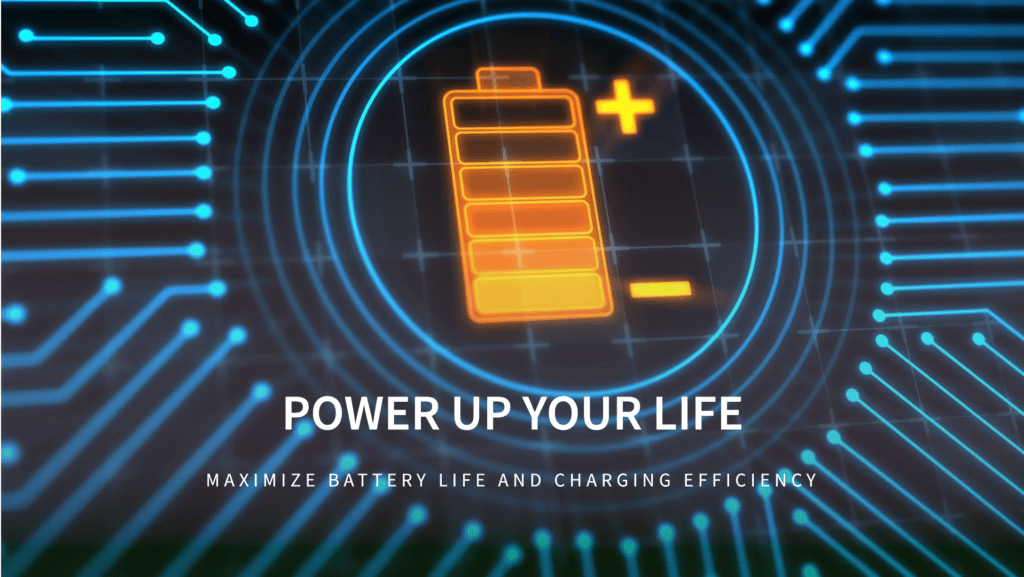
Battery Longevity
The iPhone 8 Plus offers a robust battery performance, making it a reliable companion for daily tasks. Equipped with a 2,691mAh lithium-ion battery, it delivers up to 14 hours of talk time and approximately 13 hours of internet use, depending on your activities.
Apple has optimized the device’s energy consumption through the A11 Bionic chip, which balances performance and efficiency. This chip intelligently manages power, ensuring the phone operates smoothly without draining the battery excessively. For light to moderate users, the battery can last an entire day, while heavier users might need to top up in the evening.
In real-life scenarios, the iPhone 8 Plus stands out for its consistency. Whether you’re streaming videos, engaging in gaming, or using augmented reality apps, the battery performs reliably without sudden drops, which is a common concern with older devices.
Wireless Charging
One of the most significant innovations introduced with the iPhone 8 Plus is wireless charging, marking Apple’s shift toward a cable-free future. The device supports the Qi wireless charging standard, which is widely used and compatible with most wireless charging pads available in the market. This feature eliminates the hassle of dealing with tangled cables and adds a layer of convenience to your charging routine.
You simply place the phone on a compatible charging pad, and it starts juicing up instantly. While wireless charging isn’t as fast as wired charging, it’s perfect for overnight or desk setups, ensuring your phone is always topped up when you need it.
Fast Charging Capabilities
For those who prefer a quicker solution, the iPhone 8 Plus supports fast charging. With a fast charger (not included in the box), you can charge the battery up to 50% in just 30 minutes. This is a game-changer for users who are constantly on the go and need their device ready in no time.
However, to make the most of this feature, you’ll need to purchase a USB-C to Lightning cable and a compatible USB-C power adapter separately. While this might add to the cost, the convenience of rapid charging often outweighs the initial investment.
Charging Efficiency and Long-Term Health
Apple incorporates advanced battery management features to ensure the long-term health of the battery. With iOS updates, users can monitor battery health through the Battery Health feature in settings. Additionally, the phone uses optimized charging techniques, where it learns your charging habits to reduce battery aging. For instance, if you usually charge your phone overnight, the iPhone 8 Plus will pause charging at 80% and finish the remaining charge just before you wake up.
Storage Options
When considering a new iPhone, one of the most important aspects to think about is storage. The iPhone 8 Plus, like other Apple devices, offers different storage options to meet the varying needs of users. The amount of storage you choose can have a significant impact on your overall experience, affecting how much you can store on your device, how smoothly it operates, and even its resale value. Here’s a closer look at the storage options available for the iPhone 8 Plus.
Different Variants
The iPhone 8 Plus comes in two storage variants: 64GB and 256GB. Let’s break down each of these options in detail:
- 64GB
The 64GB variant is ideal for users who don’t store large amounts of data on their device and prefer cloud-based solutions for storage. With 64GB, you can easily store apps, photos, videos, and music, but if you’re someone who enjoys downloading a lot of content (like movies or high-definition videos), you may find yourself running out of space quickly. It’s important to monitor your storage usage, and if you tend to keep a lot of apps or larger files, this storage option may not be enough over time. - 256GB
For those who prefer having ample storage on their phone, the 256GB variant is a perfect fit. This option gives you more flexibility to store larger media files like HD videos, high-quality photos, and extensive music libraries. It’s also the preferred choice for users who use their phones for professional purposes—like photographers, videographers, or content creators—who need to store large amounts of data locally. With 256GB, you’ll likely never have to worry about running out of space, even with frequent updates and downloads.
Choosing the Right Option
When deciding which storage variant to choose, think about how you use your phone. Do you often run out of space on your current device? Are you someone who takes a lot of pictures and videos, or do you store large apps and games? If so, the 256GB option is probably the best fit. However, if you rely on cloud storage services like iCloud or Google Drive and primarily use your device for everyday tasks like messaging, social media, and web browsing, the 64GB variant should be sufficient.
Performance and Storage
In general, higher storage variants tend to perform better. That’s because devices with more storage can allocate more space for system functions, reducing the risk of slowdowns caused by lack of available space. While the iPhone 8 Plus doesn’t come with expandable storage (a feature Apple doesn’t offer), the higher storage models still provide more room for system updates, apps, and the files that make your phone run smoothly.
iCloud Integration
Apple also offers iCloud, a cloud storage service that allows you to back up your photos, documents, and apps. This can be a lifesaver if you’re using a 64GB model and worry about running out of space. iCloud allows you to free up space on your phone by storing your files and media in the cloud, while still giving you access to them whenever you need them. While iCloud storage comes with 5GB of free storage, you can upgrade to higher tiers for a monthly fee, which could be a great solution if you’re someone who needs more space but doesn’t want to upgrade to the 256GB variant.
Impact on Price
It’s also important to note that the 256GB variant is priced higher than the 64GB variant. While the price difference might seem substantial upfront, it’s important to consider how much space you’ll need in the long run. If you’re likely to run out of storage on a 64GB model and have to pay for additional cloud storage, the price difference might not be as significant in the grand scheme of things.
Connectivity Features
In the modern smartphone world, connectivity is crucial. The iPhone 8 Plus is equipped with a range of cutting-edge connectivity features designed to provide fast, reliable, and seamless communication with other devices, networks, and services. Whether it’s surfing the web, making calls, or connecting to your wireless headphones, the iPhone 8 Plus offers advanced technology that makes all of these tasks smoother. Let’s explore the key connectivity features of this device:
LTE and Wi-Fi Speeds
The iPhone 8 Plus offers impressive network connectivity, which is crucial for anyone who needs to stay connected while on the go. It supports Gigabit-class LTE, which ensures ultra-fast mobile data speeds. Whether you’re downloading apps, streaming high-definition videos, or browsing the web, you can expect quicker load times and smooth streaming thanks to the enhanced LTE performance.
Additionally, the iPhone 8 Plus comes with Wi-Fi 802.11ac technology, which allows it to connect to faster Wi-Fi networks. With this, you can enjoy download and upload speeds that are significantly quicker than the previous Wi-Fi standards. This also means that users can experience more stable connections, even in crowded public networks or homes with multiple connected devices. It also supports Wi-Fi calling, allowing you to make voice calls over Wi-Fi instead of relying solely on cellular signals—perfect for areas with poor reception but good Wi-Fi coverage.
Bluetooth 5.0
Bluetooth technology is essential for connecting various devices, from wireless headphones to car systems and fitness trackers. Bluetooth 5.0 offers several improvements over previous versions, including:
- Greater Range: Bluetooth 5.0 has a range that is four times longer than earlier Bluetooth versions, meaning that you can use your wireless accessories from farther away without losing connection.
- Faster Speed: With Bluetooth 5.0, data transfer speeds have doubled, allowing for quicker pairing and faster transfer of audio, files, and other data between devices.
- Improved Stability: This version also offers more reliable connections, even when there are multiple Bluetooth devices around.
These improvements make the iPhone 8 Plus ideal for anyone who frequently uses Bluetooth accessories, ensuring a seamless, hassle-free experience.
NFC (Near Field Communication)
The iPhone 8 Plus also supports NFC, a feature that enables your phone to interact with other NFC-enabled devices. This is primarily used for Apple Pay, Apple’s mobile payment system, which allows you to make secure, contactless payments at stores, within apps, and online. Simply hold your iPhone 8 Plus near an NFC reader, authenticate the payment with Face ID or Touch ID, and you’re good to go.
GPS and Location Services
In addition to standard cellular connectivity, the iPhone 8 Plus comes equipped with a highly accurate GPS system. Using GLONASS (Russia’s global navigation satellite system), Galileo (Europe’s satellite system), and QZSS (Japan’s system), the iPhone 8 Plus is capable of delivering precise location tracking. Whether you’re navigating with Apple Maps or using location-based apps for services like food delivery or ride-sharing, the iPhone 8 Plus provides fast and reliable positioning data.
AirDrop
This feature allows you to wirelessly transfer files, photos, documents, videos, and other content between Apple devices, like iPhones, iPads, and Macs. AirDrop uses a combination of Bluetooth for discovery and Wi-Fi for data transfer, ensuring that files can be sent quickly and securely without needing an internet connection or cellular service.
AirPlay
Another key feature is AirPlay, which allows users to stream content from their iPhone 8 Plus to other compatible devices, such as smart TVs, Apple TVs, and speakers. AirPlay lets you share photos, videos, music, and even your iPhone’s screen wirelessly. For example, you can stream your favorite movies or shows from your iPhone to a big-screen TV or listen to your favorite playlist through a Bluetooth speaker, making it a fantastic feature for media enthusiasts.
Apple’s Wi-Fi Calling
If you’re in an area with poor cellular coverage but have a strong Wi-Fi signal, Wi-Fi Calling is a feature that allows you to make and receive calls over a Wi-Fi network. The iPhone 8 Plus is compatible with Wi-Fi Calling, which can be incredibly helpful in places like remote areas, buildings with thick walls, or even public places where cellular signals might be weak. This feature also works with VoLTE (Voice over LTE), providing higher-quality voice calls over LTE networks.
Audio and Media
The iPhone 8 Plus, like many of Apple’s flagship devices, excels in delivering a rich audio and media experience. Whether you’re watching movies, listening to music, or enjoying a podcast, the sound quality and media features are optimized to provide an immersive experience. Here’s a breakdown of the key audio and media features of the iPhone 8 Plus:
Stereo Speakers
One of the standout features of the iPhone 8 Plus is its stereo speakers. Unlike previous models with mono sound, the iPhone 8 Plus incorporates two speakers: one at the bottom of the phone and one in the earpiece. This stereo setup creates a more dynamic and fuller sound compared to the mono speaker of earlier iPhone versions. The result is a richer, more immersive audio experience, whether you’re watching videos, playing games, or listening to music.
The stereo speakers also offer louder and clearer sound, which is particularly noticeable when watching videos or playing games. This feature makes the iPhone 8 Plus a solid choice for users who enjoy media consumption directly on their device without relying on external speakers or headphones.
Sound Quality
The sound quality of the iPhone 8 Plus speakers is impressive, offering clear highs, balanced mids, and deep lows. Apple has fine-tuned the audio output to ensure that it delivers a premium sound experience. Even when the volume is turned up, the sound doesn’t distort, making it an ideal phone for listening to music, podcasts, or watching videos. The device features Apple’s audio technology to further enhance sound fidelity.
No Headphone Jack
One of the most significant changes with the iPhone 8 Plus, as with its predecessors, is the absence of a headphone jack. Apple removed the 3.5mm headphone jack starting with the iPhone 7, and the trend continued with the iPhone 8 Plus. This move was controversial, but Apple encourages users to switch to wireless headphones or use the Lightning port for wired audio accessories.
While this change might inconvenience some users, the absence of the headphone jack allows for a more streamlined, water-resistant design. Users who prefer wired headphones can still use the Lightning to 3.5mm adapter to connect standard headphones.
On the other hand, the removal of the headphone jack has fueled the rise of AirPods and other Bluetooth headphones, which deliver a more modern and convenient listening experience. This move aligns with Apple’s push for wireless connectivity, not just in audio but across its entire product ecosystem.
AirPlay 2 and Wireless Media Streaming
AirPlay 2, Apple’s wireless streaming protocol, is another feature that enhances the media experience on the iPhone 8 Plus. AirPlay 2 allows users to stream content from their iPhone 8 Plus to compatible speakers, TVs, and other devices. This wireless media transfer makes it easy to play music in multiple rooms or stream videos to a larger screen without dealing with cables.
The iPhone 8 Plus also supports Dolby Digital Plus audio, ensuring that when content is streamed via AirPlay or played directly on the phone, the sound is clear, crisp, and vibrant. Whether you’re watching a movie or listening to a song, AirPlay 2 improves the audio experience with support for synchronized sound across multiple devices.
Enhanced Audio for Media Playback
The iPhone 8 Plus is equipped with built-in media playback support for a variety of formats. It supports high-quality video and audio codecs, ensuring compatibility with a wide range of media types, from MP3s to FLAC files. Whether you prefer listening to music in lossless quality or watching 4K video on a streaming platform, the iPhone 8 Plus handles it smoothly.
Additionally, when streaming video content from platforms like YouTube, Netflix, or Apple TV+, the device ensures that both audio and video are of the highest possible quality. The stereo speakers make sure that you get a cinematic experience, even if you don’t have access to external speakers or headphones.
Environmental Considerations
In recent years, environmental responsibility has become a significant factor for many tech companies, including Apple. With growing awareness about climate change and electronic waste, Apple has worked to improve its environmental footprint. The iPhone 8 Plus is no exception, as Apple has made strides to create a more eco-friendly product through sustainable design and manufacturing practices.
Eco-Friendly Manufacturing
Apple has committed to reducing the environmental impact of its products, and the iPhone 8 Plus reflects this dedication. For example, the iPhone 8 Plus uses recycled aluminum in its frame. This helps reduce the demand for new raw materials, which is essential for conserving natural resources. Additionally, rare earth elements used in the phone’s components, like magnets, are sourced more responsibly, aiming to reduce mining practices that can harm the environment.
Apple has also made efforts to minimize carbon emissions during the production of the iPhone 8 Plus. The company has invested in renewable energy sources for its production facilities, making the manufacturing process more sustainable. In fact, Apple has claimed that its global corporate operations, including the production of products like the iPhone 8 Plus, have been carbon neutral since 2020. This means that the carbon footprint associated with making and shipping the iPhone is offset through various environmental initiatives, such as planting trees and investing in renewable energy projects.
Recycling and End-of-Life Considerations
Once the iPhone 8 Plus reaches the end of its lifecycle, Apple has implemented recycling programs to ensure that the device doesn’t contribute to the growing issue of electronic waste. Apple’s Daisy robot, for example, is used to disassemble old iPhones and recover valuable components for reuse, such as metals, batteries, and rare earth elements. This recycling process helps reduce the environmental impact of the device after its useful life.
Moreover, Apple has set a goal to make all of its products 100% recyclable. While the iPhone 8 Plus is not entirely made from recyclable materials, the company’s efforts to recycle old devices ensure that more components are reused, thus reducing waste and pollution.
Packaging
Another area where Apple focuses on environmental responsibility is packaging. The iPhone 8 Plus packaging has been designed to minimize environmental impact. Apple has reduced the amount of plastic used in packaging, and the box itself is made from 100% recycled paper. This reduction in plastic is part of Apple’s broader effort to eliminate the use of harmful plastics in its packaging.
Apple’s commitment to reducing waste is not limited to its products. The company has also been advocating for better recycling and e-waste disposal practices globally. By promoting responsible consumption and offering recycling options, Apple hopes to inspire other companies and users to make eco-friendly choices when disposing of old technology.
Energy Efficiency
Another key factor is the energy efficiency of the iPhone 8 Plus. The device is designed to consume less power, reducing the overall carbon footprint during use. It is equipped with energy-efficient components such as the A11 Bionic chip, which optimizes power usage, making the device more efficient and extending its battery life. The iPhone 8 Plus also supports low power mode, which helps users save energy when their battery is running low, thereby promoting sustainability through everyday use.
Comparing iPhone 8 Plus with Competitors
The iPhone 8 Plus, while being one of the earlier models in Apple’s lineup, still offers a set of features that make it competitive against other smartphones, both within the Apple ecosystem and across the broader smartphone market. Let’s explore how it stacks up against its direct competitors, especially those released around the same time.
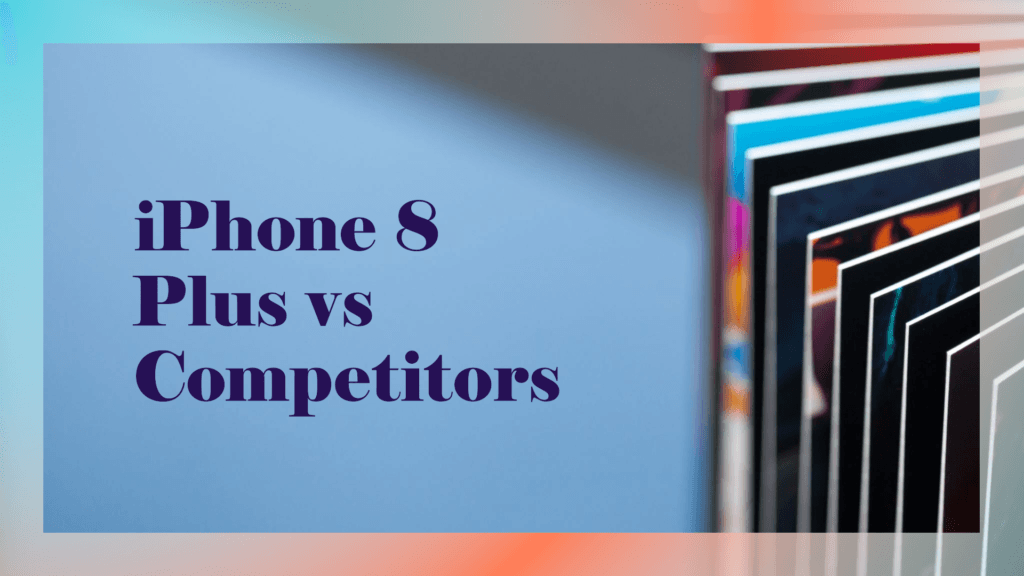
iPhone 8 Plus vs. iPhone X
When Apple launched the iPhone 8 Plus alongside the iPhone X, the X model took the spotlight with its bezel-less OLED display and Face ID features. However, the iPhone 8 Plus held its ground due to several key aspects:
- Design and Display: The iPhone 8 Plus features a 5.5-inch Retina HD display with True Tone, which is bright and vibrant but is still an LCD panel compared to the iPhone X’s more advanced OLED display. While the iPhone X boasts a superior contrast ratio and deeper blacks, the iPhone 8 Plus has a larger, traditional design that appeals to users who prefer a home button and Touch ID.
- Performance: Both the iPhone 8 Plus and iPhone X are powered by the A11 Bionic chip, meaning they perform almost identically in terms of speed and power. However, the iPhone X’s edge lies in its facial recognition and immersive display features, which are not available on the 8 Plus.
- Camera: The iPhone 8 Plus has a dual 12MP rear camera setup, which offers impressive features like Portrait Mode. However, the iPhone X introduced better software for low-light performance and a more advanced front-facing camera. Both phones excel in photography, but the iPhone X offers slight advantages in terms of design and added capabilities.
iPhone 8 Plus vs. Samsung Galaxy S8
At the time of the iPhone 8 Plus’s release, Samsung’s Galaxy S8 was one of its main Android competitors. The Galaxy S8 had some modern features that appealed to a different set of users:
- Display: The Samsung Galaxy S8 featured a 5.8-inch Super AMOLED Infinity Display with curved edges, offering a more immersive experience with richer colors and deeper contrasts than the iPhone 8 Plus’s Retina display. While the iPhone 8 Plus’s screen is solid and dependable, it doesn’t reach the same level of vibrancy or screen-to-body ratio as the Galaxy S8.
- Design: The Galaxy S8’s slim bezel and sleek curved edges made it feel more modern compared to the iPhone 8 Plus, which retains the traditional design with larger bezels. The iPhone 8 Plus is bulkier, which some users prefer, but others may find it a bit outdated compared to the edge-to-edge design of the S8.
- Camera: Both phones feature capable cameras, but Samsung’s Galaxy S8 has an edge in terms of versatility. It offers advanced photo and video features, including a super-wide lens, while the iPhone 8 Plus has a dual-camera system that performs slightly better in portrait photography. The S8, however, was better equipped for wide-angle shots and low-light conditions at the time.
- Battery Life: Battery performance is fairly similar in both devices, with the Galaxy S8 offering slightly more efficient use of power thanks to its smaller, energy-efficient AMOLED screen. The iPhone 8 Plus, however, comes with a larger battery, giving it a slight edge in real-world usage for those who need more hours of operation.
iPhone 8 Plus vs. Google Pixel 2 XL
Google’s Pixel 2 XL was another key player in the market during the iPhone 8 Plus’s heyday, especially for users who valued camera quality and pure Android experience.
- Camera: One of the biggest draws of the Pixel 2 XL was its camera. The iPhone 8 Plus offers a dual-camera system, whereas the Pixel 2 XL relies on a single rear camera. Despite this, the Pixel 2 XL’s camera was renowned for its software-powered image processing, particularly in low-light situations. Apple’s Portrait Mode gives the iPhone 8 Plus an advantage in terms of subject isolation and bokeh effects, but the Pixel 2 XL wins in night photography and color accuracy.
- Operating System: The iPhone 8 Plus runs iOS, offering a highly polished and secure ecosystem with seamless integration with other Apple devices. The Pixel 2 XL, running Android, provides a more customizable interface and direct access to Google’s services and Assistant, making it appealing for Android enthusiasts.
- Performance: The Pixel 2 XL was powered by the Snapdragon 835 chipset, which, while fast, is not quite on par with the A11 Bionic chip in the iPhone 8 Plus in terms of raw performance and optimization. In day-to-day usage, the iPhone 8 Plus generally delivers smoother performance due to iOS optimization, though the Pixel 2 XL is more than capable for most tasks.
iPhone 8 Plus vs. OnePlus 5T
For those looking for an affordable alternative to the iPhone 8 Plus, OnePlus’s 5T was a strong competitor, offering flagship features at a lower price point.
- Display: The OnePlus 5T boasted a 6.01-inch AMOLED screen with a taller 18:9 aspect ratio, giving it a more modern look and feel. While the iPhone 8 Plus’s screen is still excellent, the 5T offered a more immersive experience with its minimal bezels and larger display.
- Performance: Both devices offer flagship-level performance, but the iPhone 8 Plus wins in terms of overall optimization. The 5T uses the Snapdragon 835 chip, which is comparable to the A11 Bionic, but iOS has been shown to outperform Android in certain tasks, particularly when it comes to resource management and multitasking.
- Battery and Charging: The iPhone 8 Plus features wireless charging and fast charging capabilities, but OnePlus took it a step further with its Dash Charge, which offers incredibly fast wired charging speeds. The iPhone 8 Plus, however, is slightly ahead when it comes to wireless charging, which is still a rare feature in many competitors.
iPhone 8 Plus vs. Huawei Mate 10 Pro
The Huawei Mate 10 Pro, with its own dual-camera system and high-end specs, posed a formidable challenge to the iPhone 8 Plus, especially in international markets.
- Display: The Mate 10 Pro’s 6-inch OLED display with a 18:9 aspect ratio offered a larger, more modern display compared to the iPhone 8 Plus’s 5.5-inch LCD. Both displays were of excellent quality, but Huawei’s use of OLED technology gave its device deeper blacks and richer colors.
- Camera: Huawei’s dual-camera setup, powered by Leica lenses, offered excellent photo and video quality, often competing closely with the iPhone 8 Plus in terms of overall image sharpness and color accuracy. However, Apple’s Portrait Mode and better video recording performance (including 4K video at 60 fps) were standout features that gave the iPhone 8 Plus an edge in this department.
- Battery: The Huawei Mate 10 Pro featured a larger battery and efficient power management, giving it an advantage in terms of battery life. The Mate 10 Pro was also equipped with faster charging technology, though the iPhone 8 Plus offered the convenience of wireless charging.
Pros and Cons of the iPhone 8 Plus
Pros
- Stunning Display
The iPhone 8 Plus boasts a 5.5-inch Retina HD display that offers vibrant colors and deep blacks, providing a great viewing experience for media consumption, gaming, and general use. The True Tone technology adjusts the display’s brightness and color balance based on your environment, making it more comfortable for prolonged use. This makes the iPhone 8 Plus stand out even compared to some newer models in terms of sheer screen quality. - Excellent Performance
Powered by the A11 Bionic chip, the iPhone 8 Plus delivers lightning-fast performance. Whether you’re running multiple apps, playing demanding games, or using augmented reality (AR) applications, the A11 chip ensures smooth, lag-free experiences. It also delivers excellent power efficiency, giving you great performance without draining your battery too quickly. - Dual Camera System
The 12MP dual-camera setup on the back includes a wide-angle and telephoto lens, which makes it perfect for capturing photos with stunning detail. Portrait mode and portrait lighting further enhance photography, enabling you to create professional-quality photos with blurred backgrounds and customizable lighting effects. The camera also performs well in low light, thanks to improved sensors and smart image processing. - Wireless Charging
The iPhone 8 Plus introduces wireless charging—a feature that adds significant convenience. You can charge your phone simply by placing it on a wireless charger without needing to plug in a cable. This makes it more efficient when you’re at home or in a café, and many third-party chargers are available for added flexibility. - Build Quality and Durability
The glass and aluminum design is not only premium in appearance but also durable. The IP67 water and dust resistance rating ensures that your device can withstand splashes and even accidental submersion in water (up to 1 meter for 30 minutes). This durability provides peace of mind for users who tend to take their phones everywhere. - Longevity and Software Updates
The iPhone 8 Plus, like all Apple devices, benefits from long-term software support. Even though it’s not the latest model, it still receives the latest iOS updates regularly, ensuring that users have access to new features, security patches, and optimizations for years after the initial release. This is one of the main reasons Apple devices have a reputation for longevity.
Cons
- No 5G Support
While the iPhone 8 Plus was state-of-the-art when it launched, it does not support 5G connectivity. In today’s world, where 5G networks are rapidly expanding and offering significantly faster speeds, this is a notable limitation. Users looking to future-proof their phone may want to consider newer models that come with 5G support. - Design Feels Outdated
The iPhone 8 Plus retains the design that has been characteristic of earlier iPhones: a home button and relatively larger bezels around the screen. In contrast, newer iPhone models, such as the iPhone X series and beyond, have adopted edge-to-edge displays and Face ID, making the iPhone 8 Plus’s design feel somewhat outdated by 2024 standards. - Battery Life Could Be Better
While the iPhone 8 Plus’s battery life is decent for everyday use, it isn’t the best compared to some of the newer models, which have more power-efficient processors and larger battery capacities. Heavy users may find that the battery drains faster when using demanding apps, especially compared to the latest devices, which have more energy-efficient hardware. - No Headphone Jack
The removal of the headphone jack was a major shift for Apple with the iPhone 7, and it continued with the iPhone 8 Plus. While Bluetooth headphones and Lightning earphones are available, the lack of a standard 3.5mm headphone jack can be inconvenient for users who prefer traditional wired headphones or those who need to charge their phones while listening to music. - Large and Bulky
The iPhone 8 Plus is a large phone, which may be cumbersome for people who prefer smaller devices. At over 6 inches in height and more than 7 ounces in weight, it can feel heavy and bulky in one hand. Users with smaller hands may struggle to comfortably use the phone with one hand, especially while reaching the top of the display. - Limited Storage Options for Heavy Users
While 64GB might suffice for basic use, heavy media consumers and gamers may find the lower storage variant limiting, especially in an era where apps and media files are becoming larger. There’s no option for expandable storage, so once you run out of space, your only option is to manage your files or upgrade to a higher storage variant. - Expensive for Older Technology
While the iPhone 8 Plus is still a high-quality phone, its price tag can feel steep for a model that’s no longer the latest on the market. Given that newer iPhone models offer more advanced features like 5G, better cameras, and edge-to-edge displays, some users might find the iPhone 8 Plus a bit overpriced considering the competition and its age.
Conclusion
The “Conclusion” serves as the final summary of the entire article. It should tie together all the information covered in the previous sections, providing the reader with a clear and concise understanding of the iPhone 8 Plus and its place in the smartphone market.
Here are the main elements that should be included in the Conclusion:
- Recap of Key Features
- Begin the conclusion by briefly summarizing the most important features of the iPhone 8 Plus. This could include its design, camera capabilities, display technology, performance, and any standout features that differentiate it from other devices in the market.
- Mention the A11 Bionic chip, the dual-camera system, the Retina HD display, and the introduction of wireless charging as highlights.
- Comparison with Newer Models
- While the iPhone 8 Plus is a great option, it’s essential to briefly mention that there are newer iPhone models with advanced features, such as improved cameras, faster processors, and 5G support. However, this doesn’t mean the iPhone 8 Plus is outdated—it still performs excellently for day-to-day tasks like web browsing, gaming, photography, and more.
- For readers considering whether to opt for the iPhone 8 Plus over the latest iPhone models, the decision largely comes down to their personal preferences and budget.
- The Value Proposition
- This is a key point where you explain why the iPhone 8 Plus might still be the best choice for some consumers. Despite its age, it offers great value due to its robust design, reliable software, and continued support from Apple with regular updates. The availability of wireless charging, Face ID (a feature found in newer models), and excellent camera quality at a more affordable price makes it an attractive option for those not willing to splurge on the newest model.
- Final Thoughts
- In wrapping up, it’s important to affirm that the iPhone 8 Plus is still a powerful device that caters to a wide range of users. Whether you’re a casual user or someone who needs a reliable workhorse for multitasking, this phone does the job. Its longevity, combined with Apple’s ecosystem and quality software support, ensures that it remains a strong choice for people seeking a budget-friendly yet high-performance iPhone.
FAQs:
What are the standout features of the iPhone 8 Plus?
The iPhone 8 Plus stands out for several reasons. First, it offers a premium build quality with its sleek glass and aluminum design, making it visually appealing while also providing durability. The Retina HD display with True Tone technology ensures vibrant and true-to-life colors, enhancing viewing experiences. The phone is powered by the A11 Bionic chip, making it faster and more efficient, especially when handling heavy apps or multitasking. Additionally, the dual 12 MP rear camera system includes a wide and telephoto lens, perfect for capturing sharp and professional-quality photos. The inclusion of wireless charging and fast-charging support also makes it convenient for users who are on the go.
Does the iPhone 8 Plus support 5G?
The device was released in 2017, and at the time, 5G technology was not yet widespread. It supports 4G LTE and Wi-Fi for internet connectivity, both of which are still fast and reliable for most users. If 5G is essential to your needs, you would need to consider newer iPhone models, such as the iPhone 12 or later, which support 5G.
Is the iPhone 8 Plus still worth buying in 2024?
The iPhone 8 Plus can still be a good option in 2024, particularly if you’re looking for a more affordable iPhone with decent performance. While it doesn’t have the latest features like 5G support or Apple’s newer chipsets, the A11 Bionic chip is still capable of running most apps smoothly. The camera remains high-quality for everyday photography, and the design still feels premium. However, if you prioritize the latest technology, you might want to look at newer iPhone models, especially for features like 5G connectivity, better camera systems, and longer software support.
What are the available colors of the iPhone 8 Plus?
The iPhone 8 Plus is available in three color options:
- Space Gray: A sleek and classic dark finish.
- Gold: Offers a warm, elegant tone.
- Silver: A timeless option with a cool, reflective look.
These colors ensure that users have a choice that fits their style, with the gold variant particularly standing out for its unique appeal.
Can the iPhone 8 Plus handle heavy gaming?
Yes, the iPhone 8 Plus can handle heavy gaming quite well, thanks to its A11 Bionic chip and 3GB of RAM. Games with high-quality graphics and demanding processing, such as Fortnite or PUBG, can run smoothly with minimal lag. The phone also features a 5.5-inch Retina HD display, which enhances the gaming experience with crisp visuals and vivid colors. While newer models might have better GPU performance and enhanced features for gaming, the iPhone 8 Plus remains a solid option for casual and medium-level gamers.


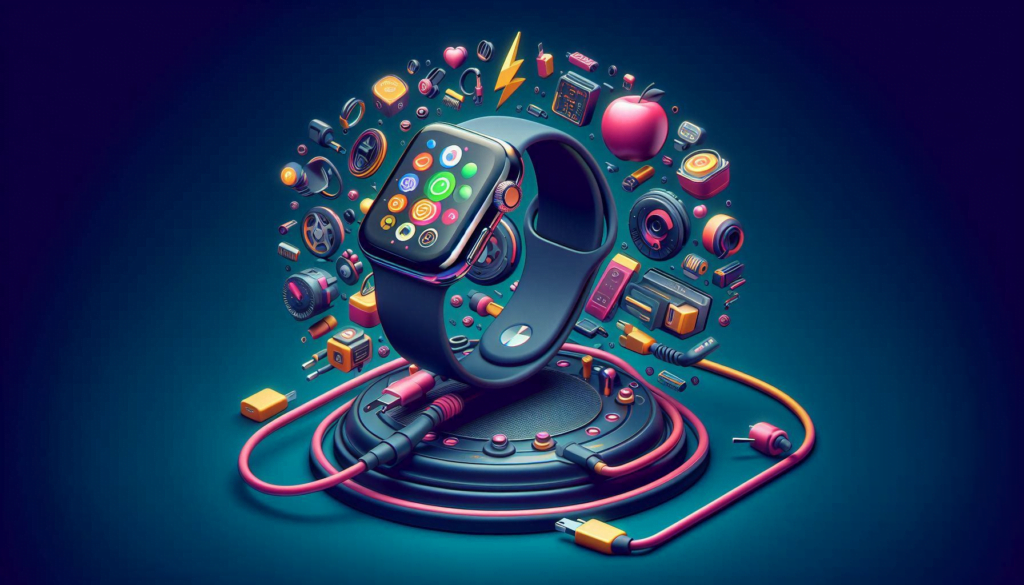
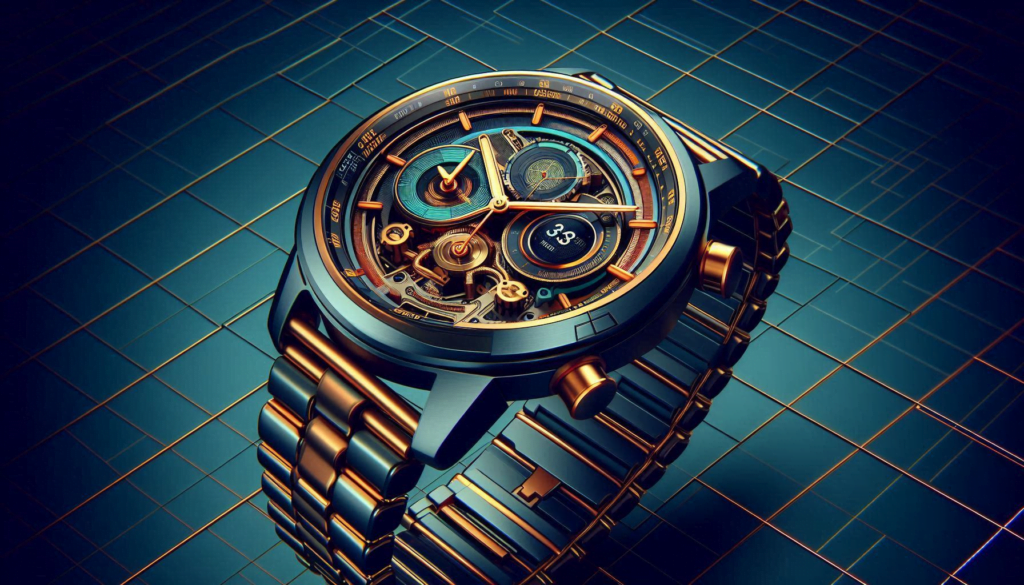


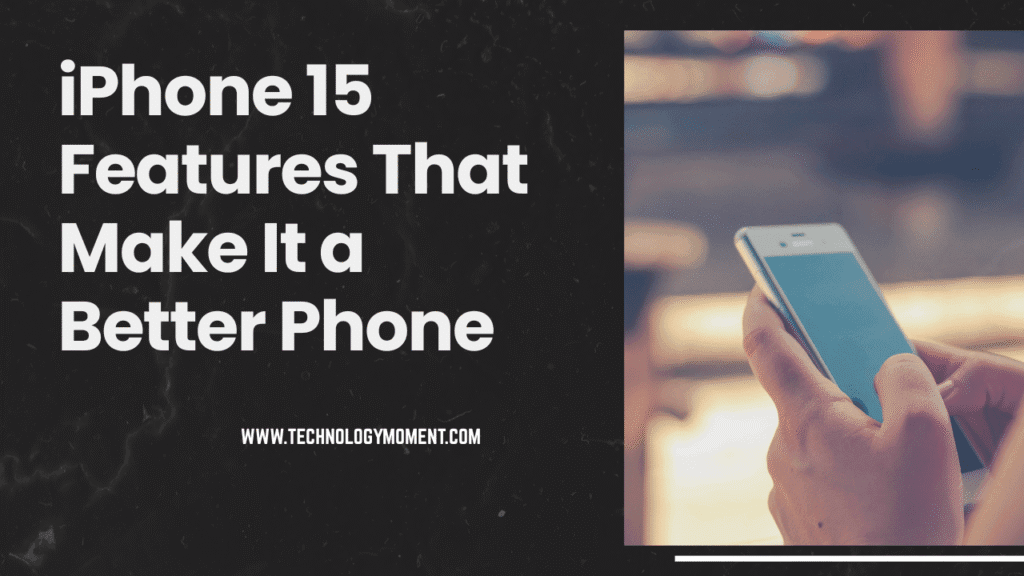
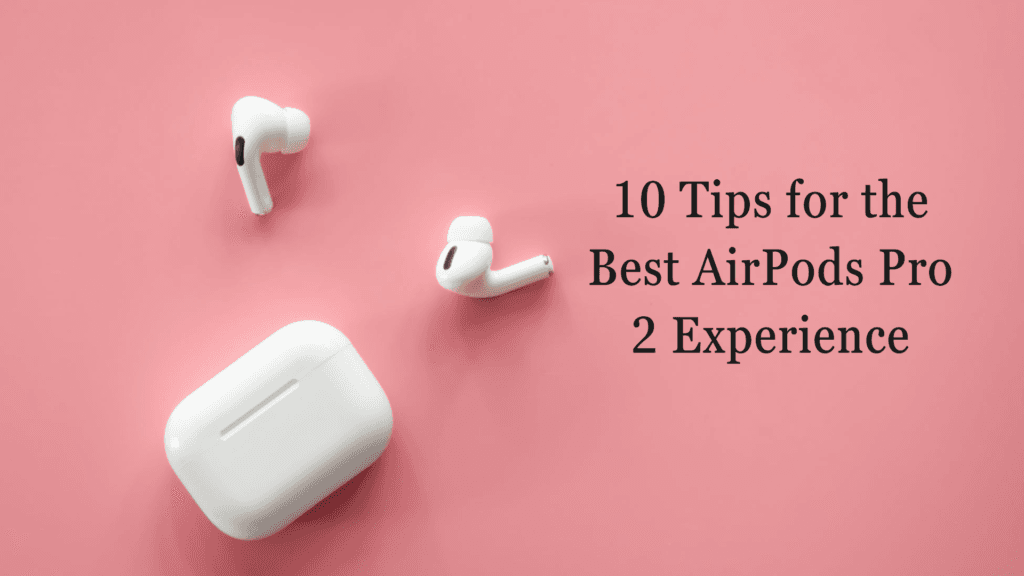
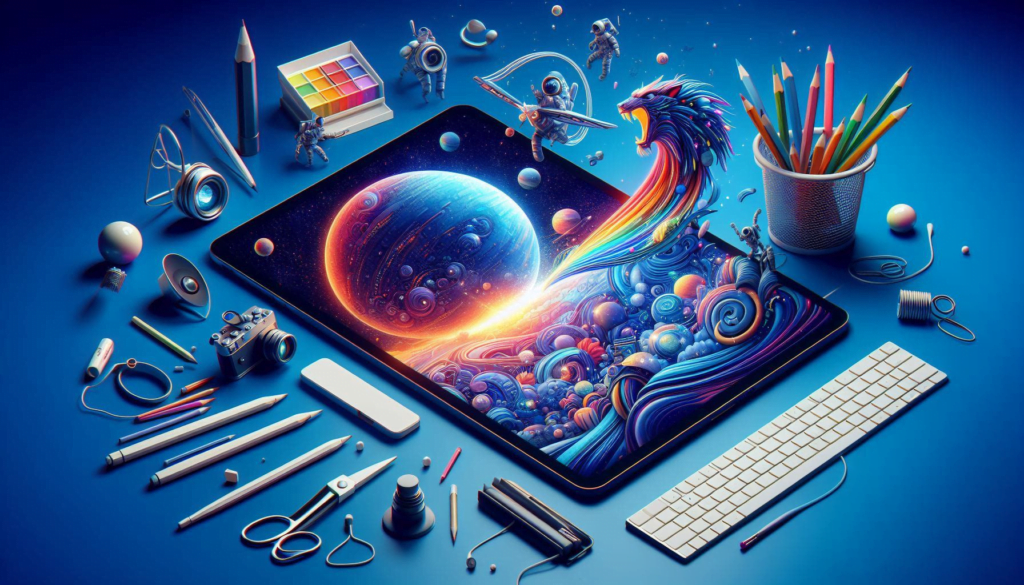
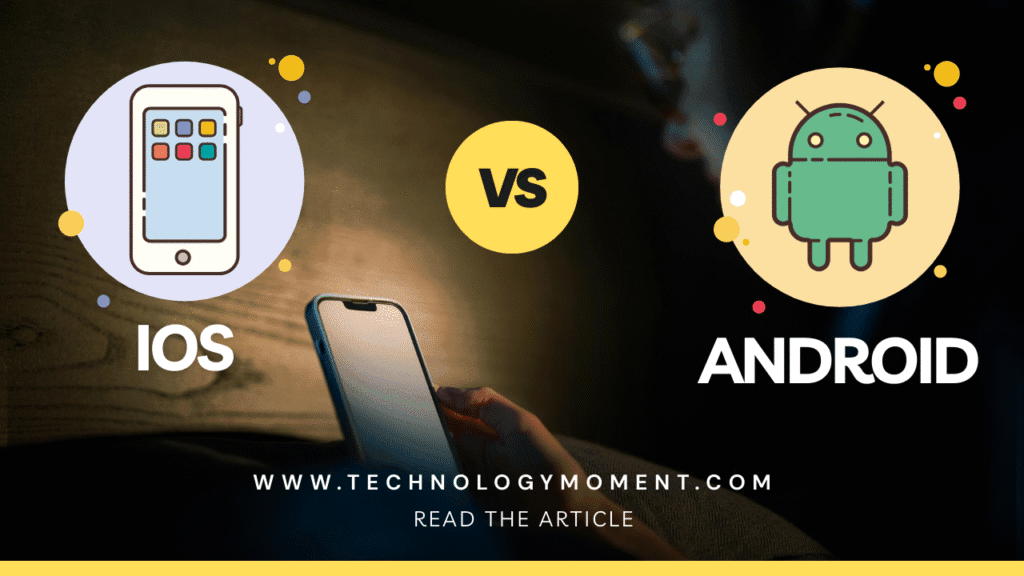
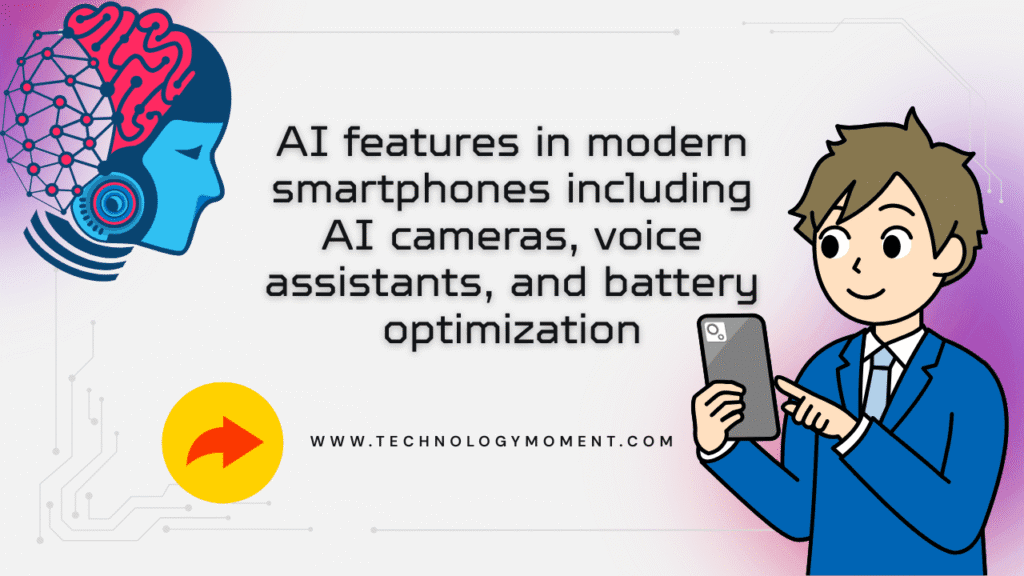
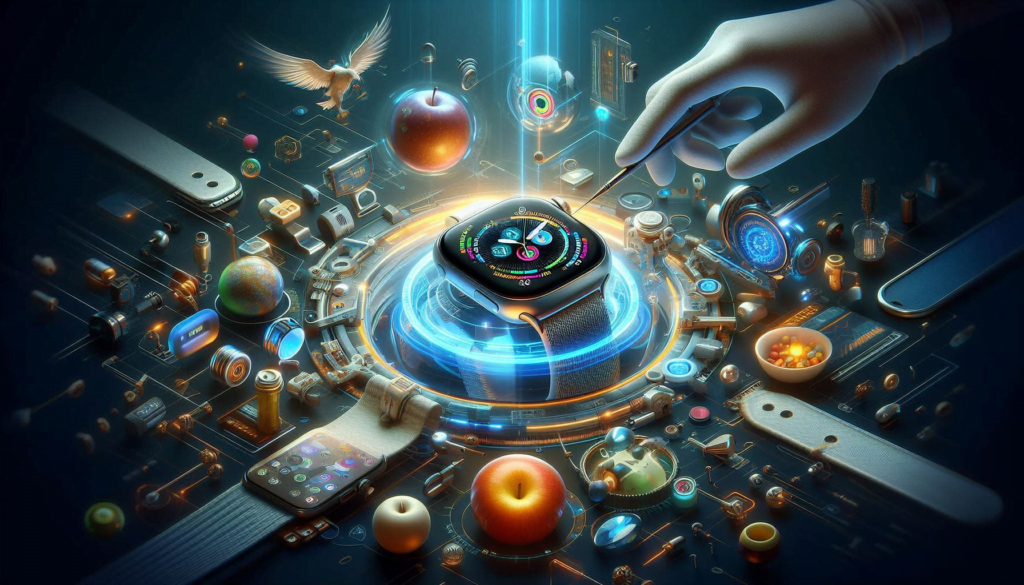
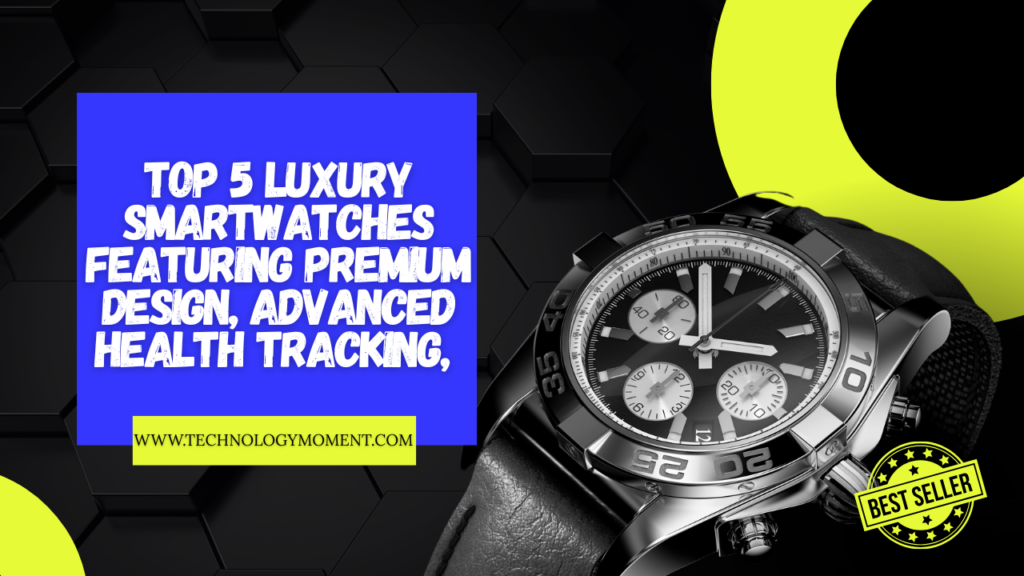

This guide on the iPhone 8 Plus is incredibly detailed! I appreciate how you broke down the features and technology in a way that’s easy to understand. It would be great to see some comparisons with newer models for context, though!
Your guide to the iPhone 8 Plus is thorough and well-structured! I especially liked how you highlighted its unique features. A comparison with previous models would add even more value for readers looking to upgrade.
Looking for a smartphone that combines elegance with cutting-edge technology? The iPhone 8 Plus is your answer! With its stunning display and powerful performance, it’s perfect for anyone wanting to elevate their tech game. Don’t miss out on this opportunity to own one of the best devices on the market!
The iPhone 8 Plus is not just a phone; it’s an experience! With features like wireless charging and an advanced camera system, it’s designed for those who want the best in mobile technology. Upgrade today and enjoy a seamless blend of style and functionality!
If you’re serious about staying ahead in technology, the iPhone 8 Plus is a must-have! Its robust capabilities are perfect for both work and play. Check out our guide to discover how this device can enhance your daily life—get yours while stocks last!